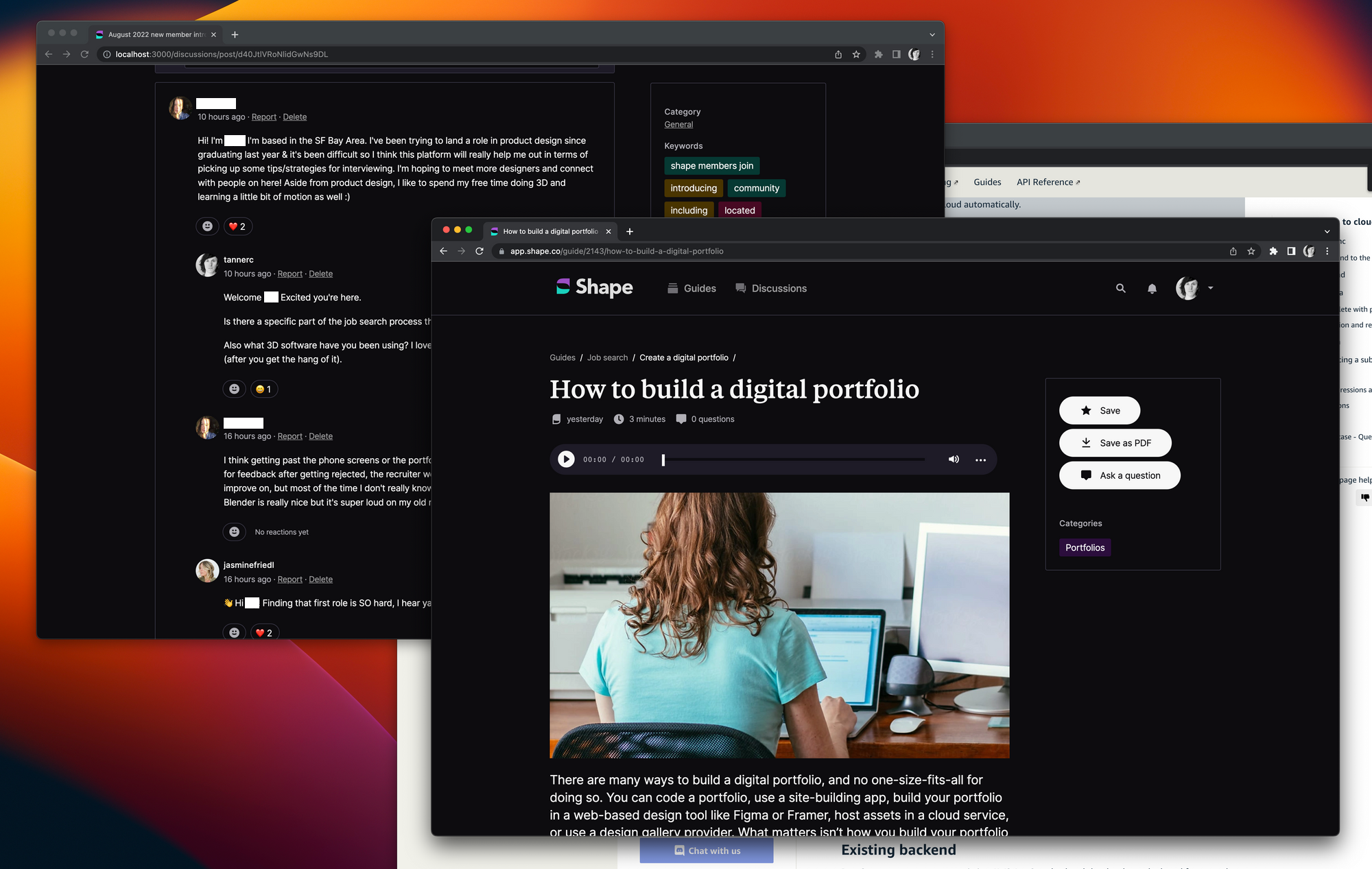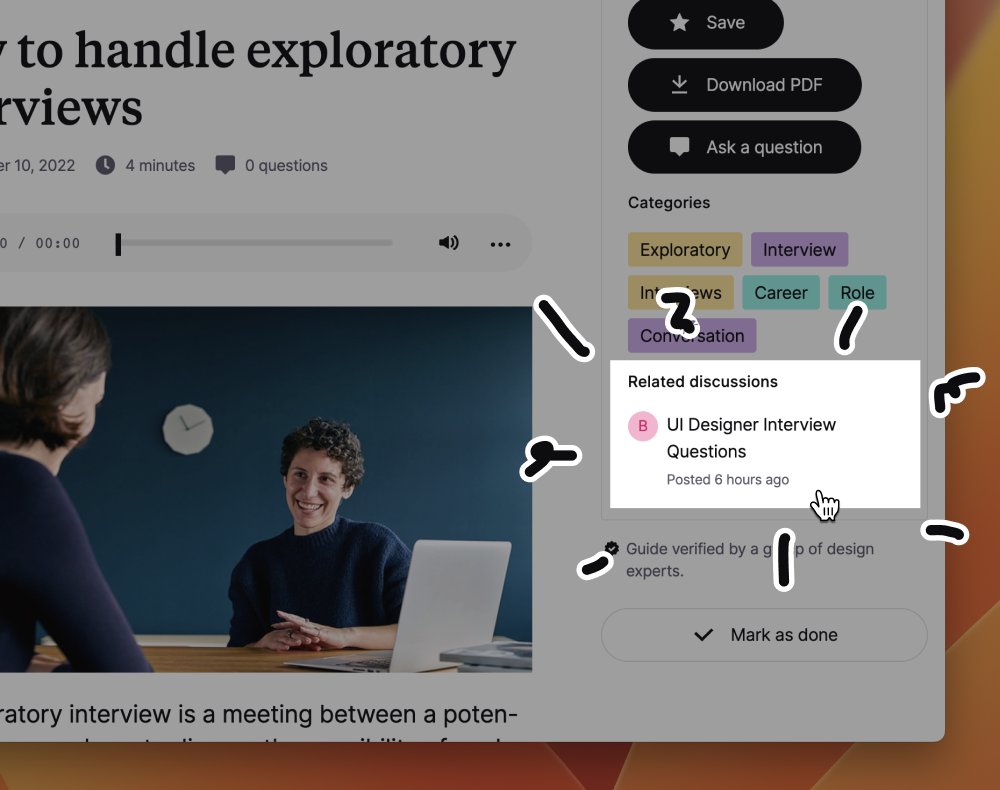After successfully establishing the design function at Gem.com, I took a step back from my career to evaluate where I was, what I had achieved, and what might be next.
Then I had an unfortunate life event that led to heart surgery, and I recognized life's fragility. It was finally time for me to take a chance at starting my own company before life got away from me. With the support of my wife, I quit my day job and set out to create Shape, an online learning platform built to help designers and design hiring managers learn how to interview effectively.
I spent the first month of my venture in research and exploration modes. I talked to many founders, investors, and designers worldwide. I learned that designers often needed help understanding the ins and outs of recruiting and interviewing. My experience working at a recruiting software company gave me an added advantage that would enable me to contribute to a designer's education. After many conversations, I landed on building a digital website that offered two sides of online learning: the first was expertly crafted and curated content, or "guides," to help designers understand the various elements of interviewing. The second side was a community where Shape members could go to evaluate guide content, get answers to questions, and connect with others.

It had been a long time since I had built any web-based products, so my first order of business was to design the product and brand while also studying how to make a modern web product.
I landed on teaching myself React and Amazon Web Services (AWS) such as Cognito, DynamoDB, Lambda, S3, and CloudWatch. Despite not knowing much about any of the technologies I was investing in, I spent many hours learning the ins and outs and eventually was able to build a members-based digital forum and database-driven content architecture.

As a solo founder, I knew the most critical feedback I could get as I was building would be from designers and users of the platform. I connected with many people across LinkedIn and Twitter to conduct early conversations. I also thought of simple ways to garner user feedback directly on the platform, such as a prompt on guide pages asking users, "How helpful was this content?" and a dedicated forum channel for user feedback.

In many of my early conversations, users repeated the importance of being able to ask questions and participate in discussions anonymously. I designed an architecture for Shape that would enable anyone to participate anonymously without losing track of conversations. I also incorporated custom spam filtering into the product to ensure user content remained on-topic and user-friendly. This, in turn, meant I had to build an admin console within the product so I could easily manage pending content, posts flagged by members, and user profiles. I also created ways for users to engage directly with me from various parts of the product, such as a feature that enabled users to highlight part of a guide and report an issue or concern with it, which would message the necessary details to me for evaluation.

I designed everything on the platform with responsiveness in mind. This way, members could participate from any device, and I could manage content and members whenever I was on the go.
After a few months of researching and building, I was ready to launch Shape. I wanted to control the experience for users because there were still many bugs and in-progress functions in the platform, so I shared Shape as an invite-only platform and posted on social media so that people could message me for an invite. Almost immediately, hundreds of people requested invites, and I grew the platform to 400 paying members.

Feedback from early members was encouraging. Early messaging was that designers sorely needed the platform in the space. With a few additional features (already planned for development), it would surely be a central place for designers everywhere to aggregate, connect with others, and learn how to interview better. I was excited to continue the platform's development with support and feedback from many dedicated designers and a strong pool of experienced design leaders.

One of the more challenging aspects of building the Shape platform was figuring out a framework for sending notifications to users both in-app and via email. I wanted to ensure users didn't get redundant notifications, so I had to map notifications and assign them priority against user settings. For example: a user could "follow" a discussion thread, which meant they would get a notification any time there was a new reply. However, if the new reply also mentioned that user, they might get two separate notifications: one about the new activity on the discussion they were following and a second to say they were mentioned in a comment. Instead, I designed an optimal path for notifications so users never received more than one for similar activity sources.

After six full months of running the business, it became apparent that my time as a designer and builder was overshadowed by bug fixes, customer support requests, planning for business finances and taxes, and conversations with venture capitalists (VC). In other words, I spent an enormous amount of time doing the business work for my business and less time doing the design and building work I had enjoyed during the earlier months.
After much reflection and several rejected VC calls, I decided to shut down the platform and look for a full-time job that would enable me to do what I loved: design and build products alongside a team. The decision was not easy, and I explored many options before deciding, but in the end, I'm happy about what I created with Shape, the connections I made through the process, and the lessons I learned as a result.



Additionally, I was able to take all of the work I had put into Shape and transform it into a book: A Designer's Guide to Interviewing.

